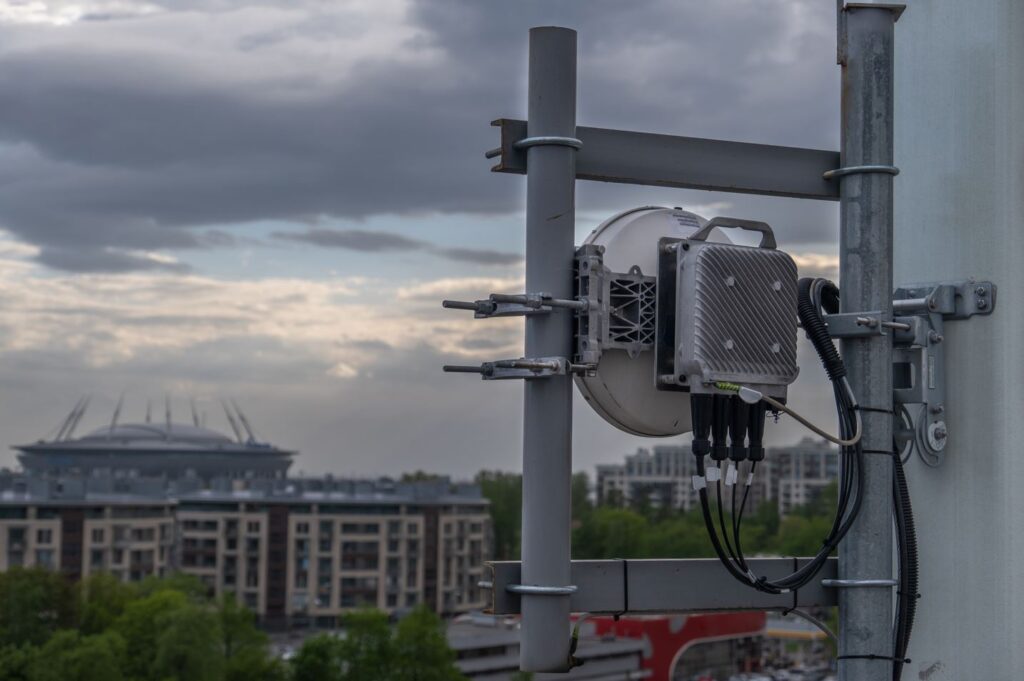Scaling Up Live Event Coverage with 5G Technology
Everyone who has attended a major venue or event, such as a football stadium or concert, knows the pains of getting good Internet access in such a packed venue. There are too many people and not enough bandwidth. Many initial use cases for 5G have been restricted to achieving much higher speeds, allowing users to enjoy seamless connectivity for live gaming, video conferencing, and live broadcasting. Within a few years, consumers will demand more immersive experiences to enjoy sporting events, concerts, and movies. These experiences will include virtual and augmented reality and improved payment methods.
These experiences will hopefully lead to a win-win scenario: the end user can improve their experiences at the venue, while the telecom service provider can increase their average income per user. Delivering this higher capacity and immersive experiences for live events is a challenge for telecom providers, as they struggle to scale up their networks cost-effectively for these one-off events or huge venues. Fortunately, 5G technology makes scaling up for these events easier thanks to the greater density of cell sites and the increased capacity of optical transport networks.
A Higher Bandwidth Experience
One of the biggest athletic events in the world, the Super Bowl, draws 60 to 100 thousand spectators to an American stadium once a year. Furthermore, hundreds of thousands, if not millions, of people of out-of-towners will visit the Superbowl host city to support their teams. The amount of data transported inside the Atlanta stadium for the 2019 Superbowl alone reached a record 24 terabytes. The half-time show caused a 13.06 Gbps surge in data traffic on the network from more than 30,000 mobile devices. This massive traffic surge in mobile networks can even hamper the ability of security officers and first responders (i.e., law enforcement and medical workers) to react swiftly to crises.

Fortunately, 5G networks are designed to handle more connections than previous generations. They use higher frequency bands for increased bandwidth and a higher density of antennas and cell sites to provide more coverage. This infrastructure enables reliable data speeds of up to 10 Gbps per device and more channels that enable a stable and prioritized connection for critical medical and security services. Carriers are investing heavily in 5G infrastructure around sports stadiums and other public events to improve the safety and security of visitors.
For example, Sprint updated its cell towers with Massive multiple-input, multiple-output (MIMO) technology ahead of the 2019 Super Bowl in Atlanta. Meanwhile, AT&T implemented the first standards-based mobile 5G network in Atlanta with a $43 million network upgrade. In addition to providing first responders with a quick, dependable communication network for other large events, this helps handle enormous traffic during live events like the Super Bowl.
New Ways of Interaction
5G technology and its increased bandwidth capacity will promote new ways for live audiences to interact with these events. Joris Evers, Chief Communication Officer of La Liga, Spain’s top men’s football league, explains a potential application: “Inside a stadium, you could foresee 5G giving fans more capacities on a portable device to check game stats and replays in near real-time.” The gigabit speeds of 5G can replace the traditional jumbotrons and screens and allow spectators to replay games instantly from their cellphones. Venues are also investigating how 5G and AI might lessen lengthy queues at kiosks for events with tens of thousands of visitors. At all Major League Baseball stadiums, American food service company Aramark deployed AI-driven self-service checkout kiosks. Aramark reports that these kiosks have resulted in a 40% increase in transaction speed and a 25% increase in revenue.

Almost all live events have limited seats available, and ticket prices reflect demand, seating preferences, and supply. However, 5G might allow an endless number of virtual seats. Regarding the potential of 5G for sports, Evers notes that “away from the stadium, 5G may enable VR experiences to happen in a more live fashion.”
Strengthening the Transport Network
This increased bandwidth and new forms of interaction in live events will put more pressure on the existing fiber transport infrastructure. Mobile network operators are expected to deliver their 5G promises while avoiding costly expansions of their fiber infrastructure. The initial rollout of 5G has already happened in most developed countries, with operators upgrading their optical transceivers to 10G SFP+ and wavelength division multiplexing (WDM). Mobile networks must now move to the next phase of 5G deployments, exponentially increasing the number of devices connected to the network.

The roadmap for this update remains a bit blurry, with different carriers taking different paths. For example, South Korea’s service providers decided to future-proof their fiber infrastructure and invested in 10G and 25G WDM technology since the early stages of their 5G rollout. Carriers in Europe and the Americas have followed a different path, upgrading only to 10G in the early phase while thinking about the next step.
Some carriers might do a straightforward upgrade to 25G, but others are already thinking about future-proofing their networks ahead of a 6G standard. For example, future expansions might require using 25G or 50G transceivers in their networks, but the required number of channels in the fiber might not be enough for the conventional optical band (the C-band). Such a capacity expansion would therefore require using other bands (such as the O-band), which comes with additional challenges.
An expansion to other optical bands would require changes in other optical networking equipment, such as multiplexers and filters, which increases the cost of the upgrade. An alternative solution could be upgrading instead from 10G to coherent 100G technology. An upgrade to 100G could provide the necessary capacity in transport networks while remaining in the C-band and avoiding using other optical bands. This path has also been facilitated by the decreasing costs of coherent transceivers, which are becoming more integrated, sustainable, and affordable. You can read more about this subject in one of our previous articles. By deploying these higher-capacity links and DWDM solutions, providers will scale up their transport networks to enable these new services for live events.
Takeaways
Thanks to 5G technology, network providers can provide more than just higher bandwidth for live events and venues; they will also enable new possibilities in live events. For example, audiences can instantly replay what is happening in a football match or use VR to attend a match or concert virtually. This progress in how end users interact with live events must also be backed up by the transport network. The discussions of how to upgrade the transport network are still ongoing and imply that coherent technology could play a significant role in this upgrade.
